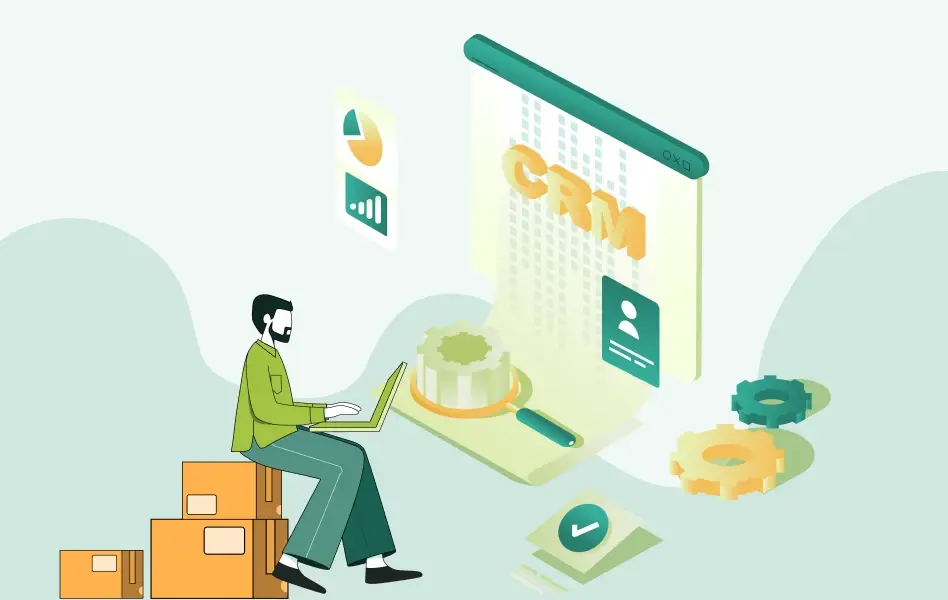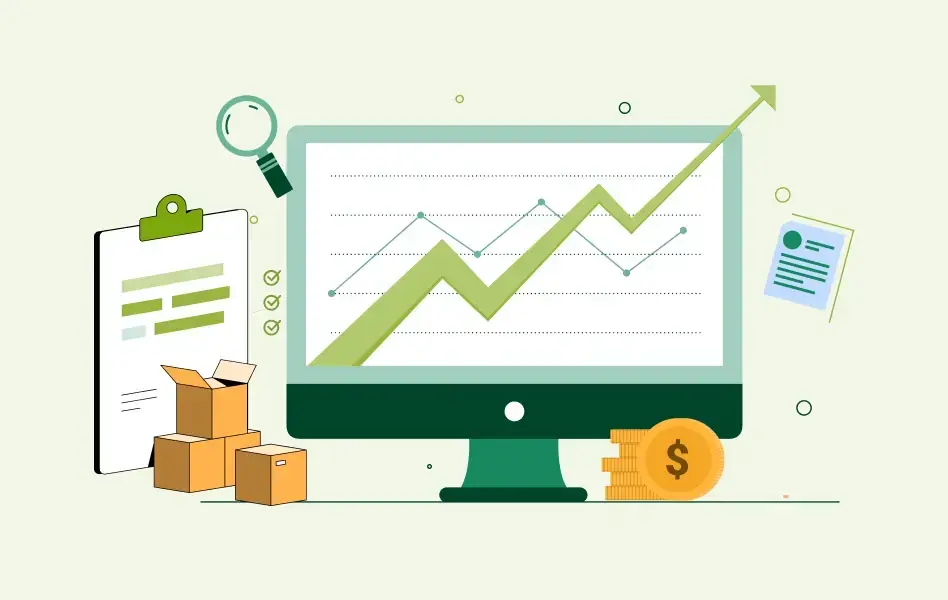Contents
- 1 Automation and Customer Experience (CX): How Are They Related?
- 2 How Manual Sales Processes Affect Customer Experience
- 3 From Manual to Automatic: Revolutionizing B2B Sales with Technology
- 4 What is B2B Sales Order Automation?
- 5 Implementing B2B Sales Order Automation
- 6 Benefits of Implementing B2B Sales Order Automation
- 7 Technological Considerations for SOA Implementation
- 8 The Way Forward
Before we dive in: does the word “automation” threaten you? Do you think automation is complex and you instinctively look over things that demand change? If you answered yes, let us get something out of the way: We understand. We get it; everything is automated nowadays and you may feel overwhelmed at times. So, let us take you on a journey where we break everything down for you: From do you need B2B sales order automation and why you need it to how you can do it and what outcomes you can expect.
Ready? Let’s go!
Automation and Customer Experience (CX): How Are They Related?
In the rapidly evolving B2B sales landscape, one thing remains constant: the paramount importance of customer experience.
Here’s why CX matters:
- 42% of customers are willing to pay more for a better customer experience.
- Improved CX can increase corporate revenue by 10-15%.
- Nearly 90% of customers switch to a competitor after a bad experience.
- 64% of buyers prioritize customer experience over price when making a purchase.
As businesses strive to meet the ever-growing expectations of modern consumers, manual sales processes present a multitude of challenges. Let’s dive in.
How Manual Sales Processes Affect Customer Experience
Manual sales processes can pose significant challenges when it comes to customer experience. Here are some of the key challenges associated with manual sales processes and their impact on CX:
1. Slow response time: Manual processes cause delays in customer service, order processing, and issue resolution, frustrating customers and leading to a poor CX.
2. Inconsistent communication: Manual processes increase the chance of communication errors among sales team members, confusing customers and disrupting their experience.
3. Limited accessibility: Manual processes are restricted to business hours, inconveniencing customers who need assistance or want to make purchases outside those times.
4. Chances of human error: Manual processes are prone to mistakes, such as entering incorrect information or mishandling inquiries, which can lead to delays and dissatisfaction.
5. Lack of personalization: Manual processes make it difficult to personalize the customer experience, resulting in generic interactions and diminished satisfaction.
6. Scalability challenges: Manual processes become harder to scale as businesses grow, requiring costly hiring and training and risking compromised CX due to increased workload.
7. Sales team inefficiency: Manual processes lead to redundant tasks and paperwork, reducing sales team productivity and prolonging the sales cycle, ultimately affecting CX negatively.
TL, DR: Manual processes are hindering your CX → Great CX is important for your business → Great CX can come from B2B sales automation
Now that we have convinced you of the importance of CX and how manual sales are harming your CX, let’s break down how automation can revolutionize your sales processes.
From Manual to Automatic: Revolutionizing B2B Sales with Technology

2. Chatbots and AI tools deployment: Integrating chatbots and AI tools provides 24/7 support, speeds up response times, and improves customer satisfaction by handling routine inquiries and facilitating self-service options.
3. Self-service portals: Offering self-service portals empowers customers to access account information, place orders, and resolve issues independently, reducing reliance on manual processes and enhancing satisfaction.
4. Automated order processing: Automating order processing and fulfillment minimizes errors, expedites delivery times, and ensures a smoother purchasing experience for customers.
5. Digital communication channels: Leveraging digital communication channels like email, live chat, and social media messaging enables real-time engagement and faster resolution of inquiries, strengthening customer relationships.
6. Personalized interactions: Automation allows for personalized interactions at scale by analyzing customer data and tailoring sales and marketing efforts to individual preferences and behavior, increasing relevance and engagement.
What is B2B Sales Order Automation?
B2B Sales Order Automation (SOA) is automating the various stages of fulfilling sales orders, from order capture to fulfillment and beyond. Its primary purpose is to streamline the order management process, eliminate manual tasks, and enhance efficiency.
Advanced technologies such as Artificial Intelligence (AI) and Machine Learning (ML) are at the heart of sales order automation. These technologies enable intelligent decision-making, automate repetitive tasks, and optimize workflows for better business outcomes. But let’s not concern ourselves with the nitty-gritty of how it’s done. Rather, let’s see what it can mean for your business.
The automation process typically involves several steps, from sales to fulfillment:
- Order capture: Customers order through self-service portals or other digital channels.
- Data validation: Orders are validated against predefined business rules to ensure accuracy and compliance.
- Order processing: Orders are processed and entered into the system, triggering fulfillment workflows.
- Fulfillment: Orders are picked, packed, and shipped to customers, with real-time tracking and updates available.
Implementing B2B Sales Order Automation
1. Syncing customer records across applications
One of the first steps in implementing Sales Order Automation is to sync customer records across applications, ensuring consistency and accuracy across the sales ecosystem. This involves integrating customer data from various sources, such as CRM, ERP, and e-commerce platforms, into a centralized database.
2. Uploading client documents to file hosting services in real time
Another critical aspect of B2B Sales Order Automation is uploading client documents to file hosting services in real time. It ensures that sales reps have access to the latest customer information, product catalogs, and pricing lists, enabling them to provide accurate and up-to-date information to customers.
3. Automating notifications for sales reps when orders arrive
B2B Sales Order Automation can also automate notifications for sales reps when orders arrive, ensuring timely follow-up and action. It includes sending alerts to sales reps via email, SMS, or push notifications, allowing them to respond quickly and efficiently to new orders.
Are you considering implementing B2B sales order automation? Platforms like WizCommerce offer end-to-end automation with automation tools and a sales portal that can help you deliver unmatched CX.

Benefits of Implementing B2B Sales Order Automation
1. Improved efficiency
Automating sales order processing reduces manual effort and eliminates the need for repetitive data entry tasks. This results in faster order processing times, enabling sales teams to focus on more strategic activities such as nurturing leads and closing deals.
2. Reduced errors
Manual data entry is prone to errors, which can lead to costly mistakes such as incorrect orders, shipping delays, and billing discrepancies. By automating sales order processing, businesses can minimize the risk of errors and ensure greater accuracy in order fulfillment.
3. Faster order-fulfillment
Automated sales order processing workflows enable orders to be processed and fulfilled more quickly. This can lead to shorter lead times, improved customer satisfaction, and increased likelihood of repeat business.
4. Enhanced customer experience
Streamlined sales order processing contributes to a better overall customer experience. Customers appreciate prompt order confirmation, accurate order tracking, and timely delivery of their purchases. By providing a seamless ordering process, businesses can build trust and loyalty with their customers.
5. Real-time inventory management
Automated B2B sales order processing systems are often integrated with inventory management software, providing real-time visibility into stock levels. This enables businesses to maintain optimal inventory levels, prevent stockouts, and fulfill orders more efficiently.
6. Enhanced CRM-integration
Another benefit of B2B Sales Order Automation is its ability to enhance CRM integration for better collaboration and customer relations. By syncing customer data across systems and automating communication workflows, businesses can improve visibility, consistency, and responsiveness, leading to stronger relationships and higher customer satisfaction.
7. Better decision-making
Automated sales order processing generates valuable data and insights that can inform strategic decision-making. By analyzing order trends, sales performance, and customer preferences, businesses can identify growth opportunities, optimize inventory management, and refine their sales strategies.
8. Cost-savings
By reducing manual labor and minimizing errors, automated sales order processing can result in significant cost savings for businesses. Additionally, streamlined workflows enable sales teams to handle higher order volumes without the need for additional resources, leading to greater operational efficiency and improved profitability.
Technological Considerations for SOA Implementation
1. Platform selection
Choosing the right automation platforms and tools is crucial. Evaluate solutions based on functionality, scalability, and integration ease to align with your business goals effectively.
2. CRM and ERP integration
Ensure seamless integration with existing CRM and ERP systems. This facilitates data sharing and automation across the sales ecosystem, enhancing efficiency and consistency.
3. Real-time data-syncing
Prioritize real-time data syncing for accurate information across applications. This ensures that customer data, product catalogs, and pricing lists remain updated, benefiting both sales reps and customers.
4. Document management
Efficient document management is essential for smooth SOA implementation. Ensure necessary documents are easily accessible and synchronized, streamlining the sales process.
5. Scalability and custom integration
Plan for future growth by considering scalability and custom integration services. Work with technology partners to develop tailored solutions that meet your evolving business needs while maintaining flexibility for expansion.
The Way Forward
So, there you have it. A guide to bringing your B2B sales operations up to speed with the evolved customer expectations and delivering delightful customer experiences.
Book a demo and unlock the benefits of B2B sales automation!








































































































